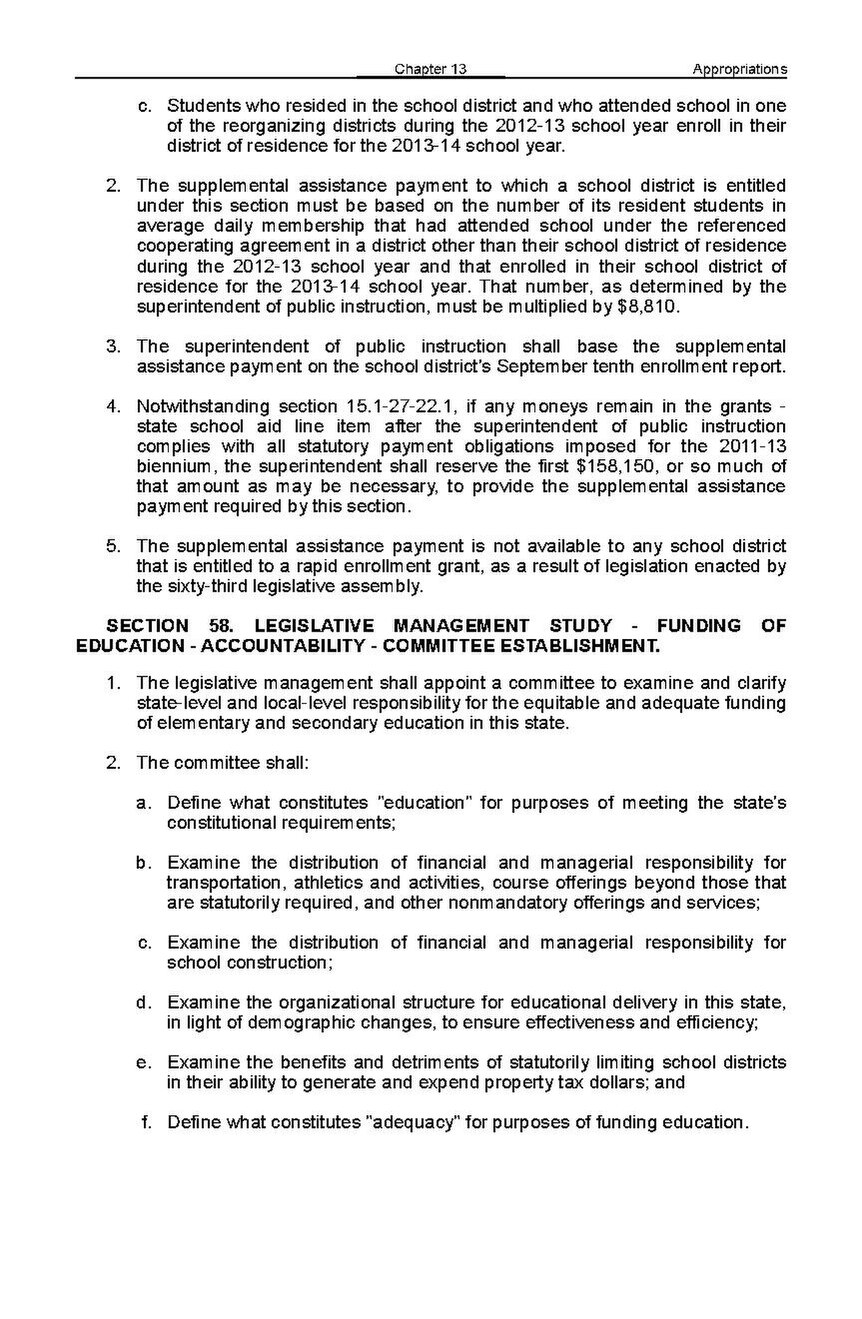Chapter 13
Appropriations
c. Students who resided in the school district and who attended school in one of the reorganizing districts during the 2012-13 school year enroll in their district of residence for the 2013-14 school year. 2. The supplemental assistance payment to which a school district is entitled under this section must be based on the number of its resident students in average daily membership that had attended school under the referenced cooperating agreement in a district other than their school district of residence during the 2012-13 school year and that enrolled in their school district of residence for the 2013-14 school year. That number, as determined by the superintendent of public instruction, must be multiplied by $8,810. 3. The superintendent of public instruction shall base the supplemental assistance payment on the school district's September tenth enrollment report. 4. Notwithstanding section 15.1-27-22.1, if any moneys remain in the grants state school aid line item after the superintendent of public instruction complies with all statutory payment obligations imposed for the 2011-13 biennium, the superintendent shall reserve the first $158,150, or so much of that amount as may be necessary, to provide the supplemental assistance payment required by this section. 5. The supplemental assistance payment is not available to any school district that is entitled to a rapid enrollment grant, as a result of legislation enacted by the sixty-third legislative assembly. SECTION 58. LEGISLATIVE MANAGEMENT STUDY - FUNDING EDUCATION - ACCOUNTABILITY - COMMITTEE ESTABLISHMENT.
OF
1. The legislative management shall appoint a committee to examine and clarify state-level and local-level responsibility for the equitable and adequate funding of elementary and secondary education in this state. 2. The committee shall: a. Define what constitutes "education" for purposes of meeting the state's constitutional requirements; b. Examine the distribution of financial and managerial responsibility for transportation, athletics and activities, course offerings beyond those that are statutorily required, and other nonmandatory offerings and services; c. Examine the distribution of financial and managerial responsibility for school construction; d. Examine the organizational structure for educational delivery in this state, in light of demographic changes, to ensure effectiveness and efficiency; e. Examine the benefits and detriments of statutorily limiting school districts in their ability to generate and expend property tax dollars; and f. Define what constitutes "adequacy" for purposes of funding education.
